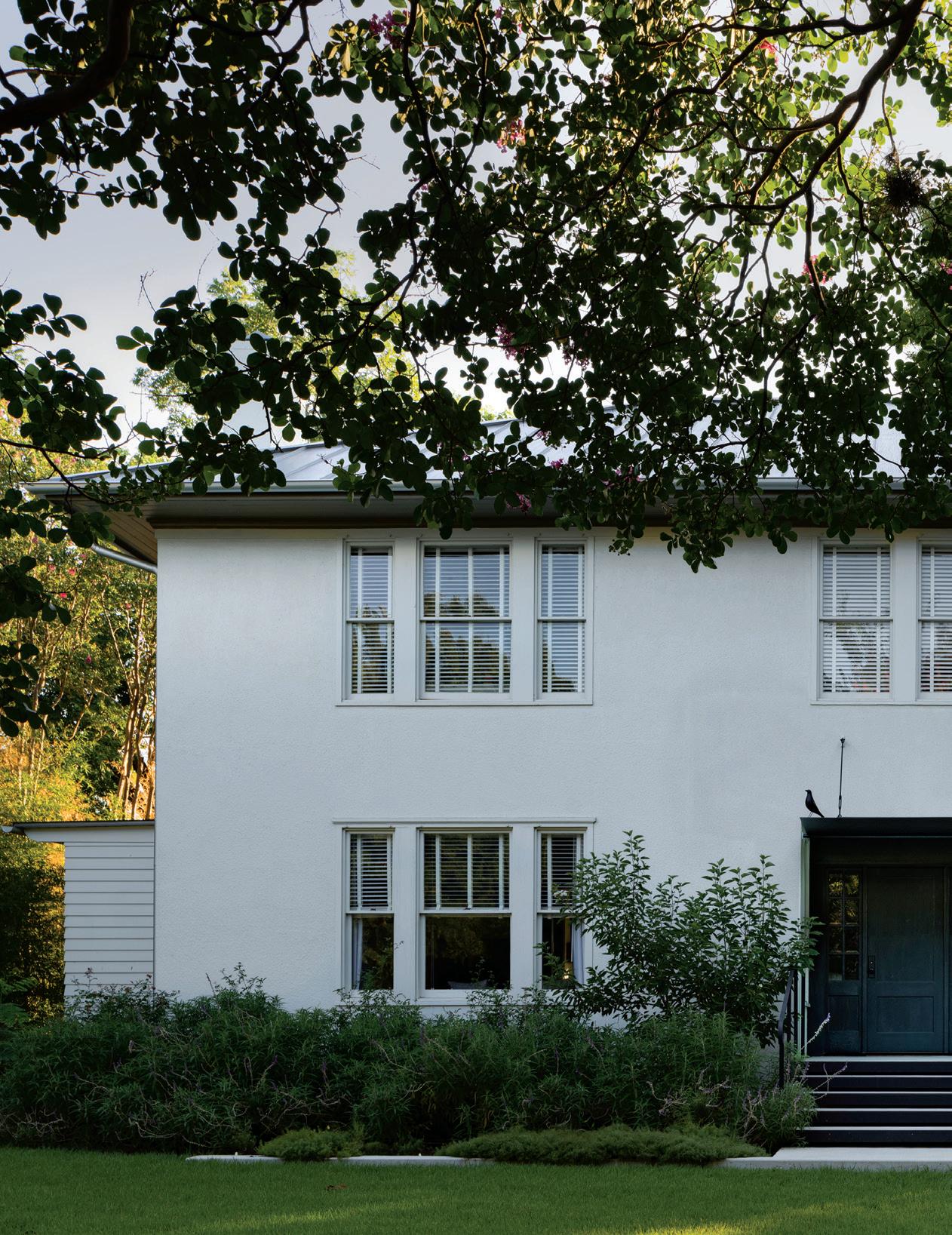
6 minute read
Past To Present
By Lauren Jones Photography by Whit Preston
PAST TO PRESENT For Tim Cuppett Architects, renovating this century-old family residence meant taking a gutted interior and elevating it to, and beyond, its former glory.
Advertisement
By Lauren Jones Photography by Whit Preston
At nearly 100 years old, this traditional home just north
of the University of Texas campus has seen its fair
share of construction. In fact, when architect
Tim Cuppett was hired by the new homeowners in the
summer of 2013, it had been left abandoned as a
construction site for many years. “We pulled off the
drywall to look for ghosts of the old framing,” he recalls.

he house clearly had good bones but needed a lot of TLC. Partitions had been relocated and the original windows and doors had been left in the basement. “We had a treasure trove of items to go through,” says the architect. But one couple could see all the potential T it had and were willing to go through a lengthy renovation process to restore the historical elements.
“My husband drove past the house every day on his way home from work and he was the one who originally got me interested,” says the homeowner. It would require a total interior renovation and partial addition to make it function like a modern home.
Located on half an acre on a corner lot, the home was built on a former creek bed, thus the basement, which Cuppett
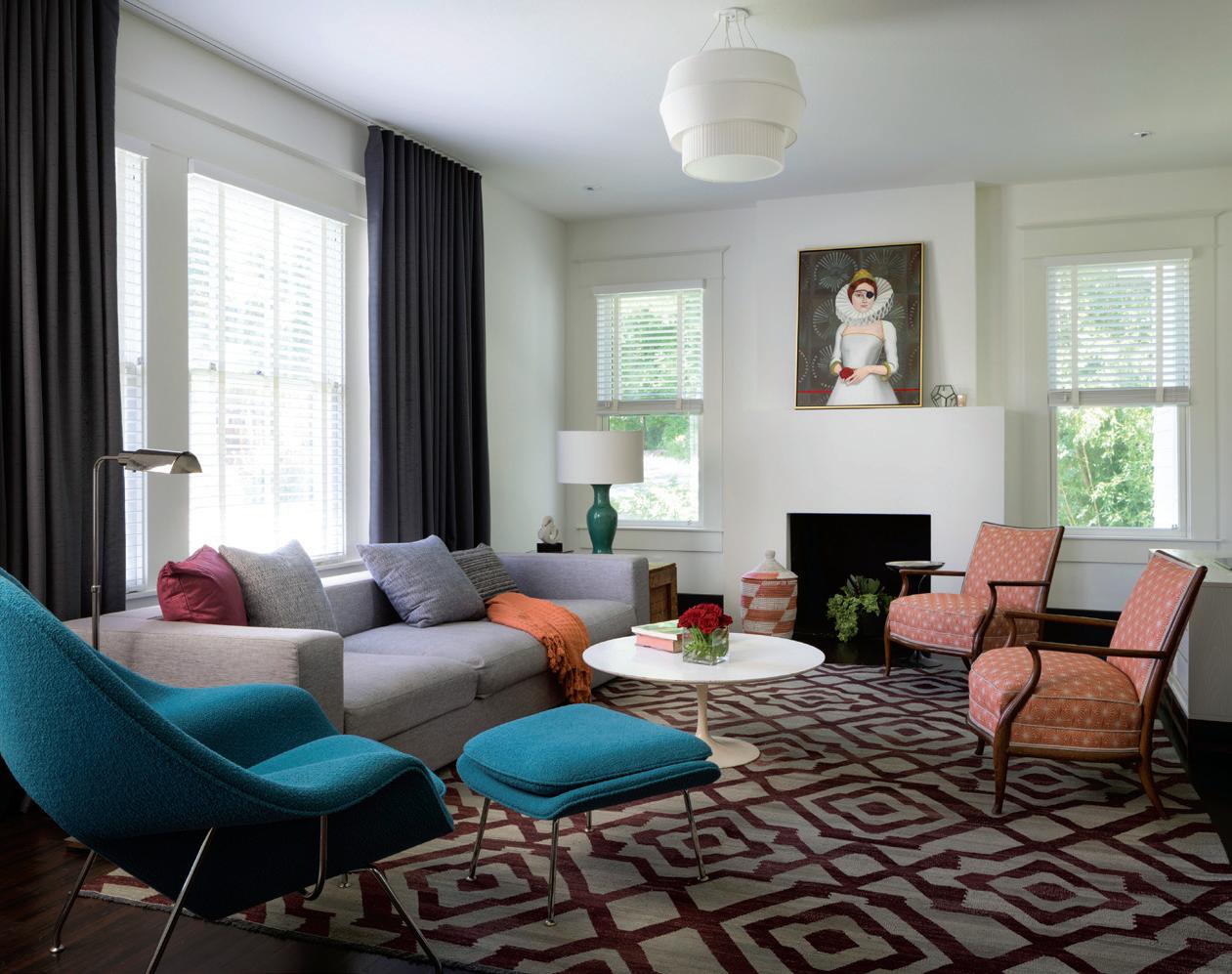
calls a glorified crawl space, could be prone to flooding. Luckily there were no structural issues upon first inspection. The property includes old stone walls, pecan trees, has views of neighboring Hemphill Park and enjoys cross breezes throughout the day. “They definitely loved the lot and the husband likes to garden,” Cuppett says. “The house was also an appealing size for a family of four. They didn’t need more space.”
The home is approximately 3,000 square feet, and Cuppett and his team added on 200 square feet of conditioned living space inside, plus 500 square feet of screened porch. The original back door is where the screened porch is today — a position which allows the family to take full advantage of the yard.
On the exterior, the stucco was repaired and new windows were installed in the original placements. The front porch


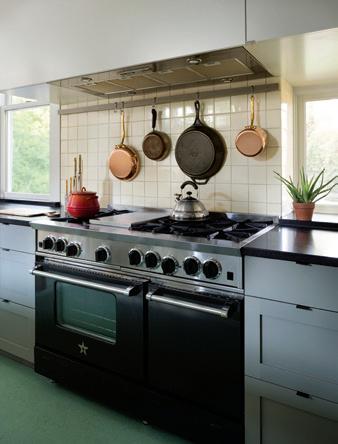
was restored by removing the previously installed addition, plus a modern steel awning and front steps were placed to complete the façade.
Inside, one of the main goals was to improve the internal flow of the home. Homes in the early 20th century certainly weren’t built with the modern homeowner in mind so the architect designed an interior layout that “retained the character and intimate size of the rooms but with a better flow,” he says.
The first floor was reimagined so the layout centers on
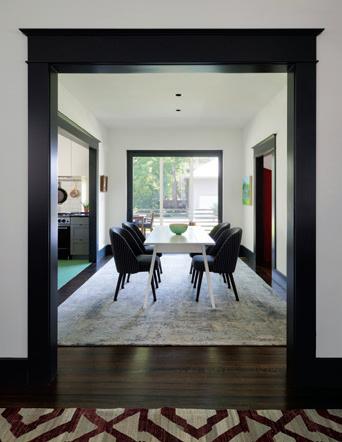
the dining room with the living room and kitchen pivoting on either axis. He restored the double-spill landing on the staircase to flow toward the front door and new mud room, enlarged the kitchen and added a powder bathroom. There’s also a sunroom, which the family uses to read and work, and they can often be found doing various arts and crafts projects at a large table, which is a family heirloom. An apple green couch — a reupholstered piece that the family already owned — and side chairs provide a shock of color and reflect the lawn and trees just outside.

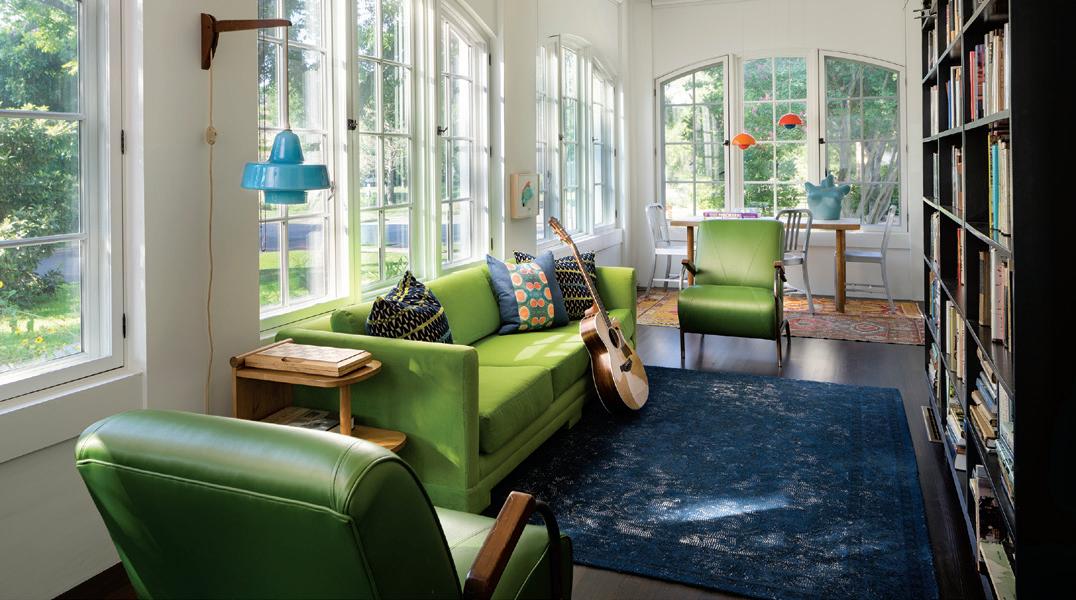

The living room and kitchen — by far are the biggest transformations — included opening up the living space, resurfacing the fireplace and adding bright, funky mid-century pieces, many of which the homeowners had collected over the years. The painting over the fireplace is by artist Honora Jacob who shows work regularly at Austin’s Wally Workman Gallery.
The kitchen renovation played on nostalgia with green linoleum flooring, black granite countertops, classic butter yellow vintage-looking tile, a custom island and colorful flatware. “We knew we wanted to find an interesting material for the flooring that was durable and felt comfortable in the context of an old home,” he says. A Patrick Puckett painting, also sourced through Wally Workman Gallery, complements the historic green shades in the flooring and the couple’s vintage dinnerware collection. The 200-square-foot addition accommodated a larger kitchen layout and new pantry. The kitchen also includes a small casement window next to the range, so food can be passed back and forth to the screened porch whenever the family dines al fresco. While from the adjoining dining room, a single leaf glass door disappears into a wall pocket, allowing flow to the screened porch to be unimpeded.
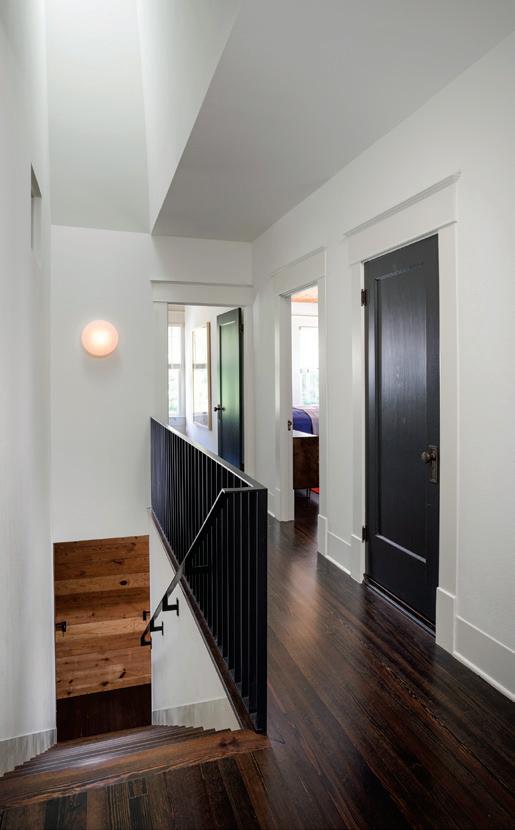
One of the most special elements in this project is the fact that all of the wood is original — an old-growth long leaf pine that isn’t available anymore. In the bedrooms and entries, nail heads and fragments of old muslin cloth can still be seen. Before the days of sheetrock, wallpaper was actually installed over muslin, which was then nailed to the wood.
And while walls of windows provide substantial daylight in the upstairs bedrooms, Cuppett wanted to brighten up the staircase and chose to add a skylight. “We like to avoid relying upon artificial light during the day,” he says.
One of the final edits to the layout was the children’s bathroom. A converted bedroom, Cuppett kept the two window placements so the vanity and mirror now float off of the wall. “It was a way of creating a bathroom that ended up being a really pretty solution,” he says.
Overall, the home’s interior blends modernized finishes with historic quirks. The furnishings vary from vintage to brand new, and many of the items were from the family’s collection — Cuppett’s colleague, Interior Designer, Adriana Chetty, helped the family refurbish and reupholster pieces to fit. There’s the white Saarinen coffee table the couple received
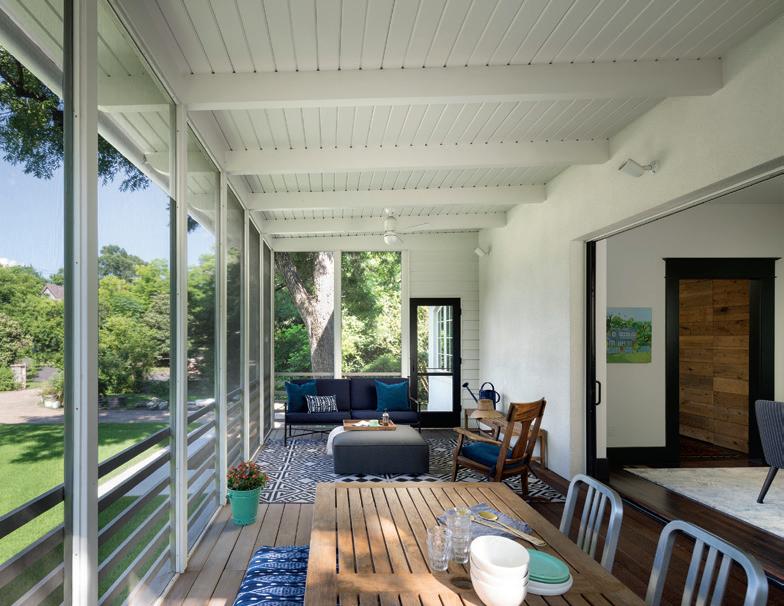

from a “cool college roommate who was really into mid-century furniture,” the pieces passed down through family and the unusual, like the Parcheesi board the couple found while enjoying a day out at the Austin Antique Market.
Today, the Hemphill Park home is a beautifully restored example of early 20th century architecture. “This house very much retains its original mass and scale, which was gracious for its time period; and therefore, fits well within the context of the neighborhood,” says Cuppett, adding, “On the exterior only new crisp and modern details distinguish the house from its former life.” u
TIM CUPPETT ARCHITECTURE + INTERIORS
512-450-0820 www.cuppettarchitects.com










